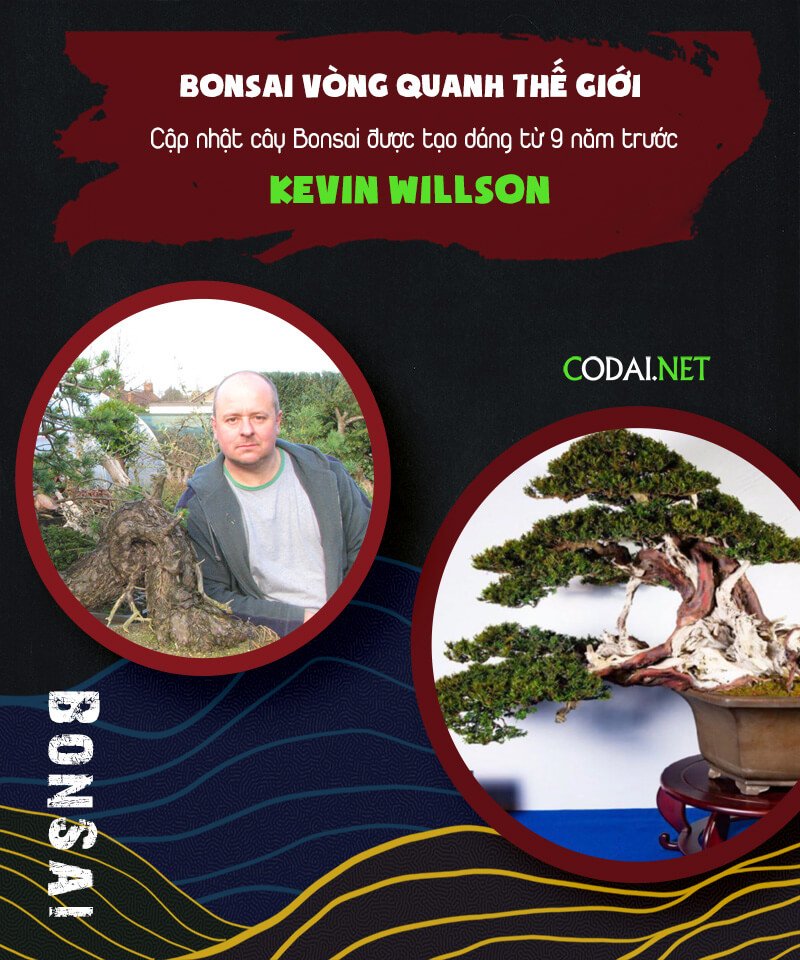Bonsai, Bonsai Focus Magazine, Hành trình - Khám phá, Người nổi tiếng
Cập nhật cây Bonsai được tạo dáng từ 9 năm trước của nghệ nhân Bonsai Kevin Willson
Nguồn: Tạp chí Bonsai Focus English Edition T7/T8 2019
Dịch và biên tập: Dũng Cá Xinh (14/08/2021)
English
Update: Amigos of the tejos – A small peek back at a tree created 9 years ago by Kevin Willson
- Text and photography: Bonsai Focus Studio
During the XX Trophy, held in February of this year, we came across an old friend, a yew styled by Kevin Willson. The tree had gone through an amazing transformation and was one of the eye catchers of the show. We could not help but take a short stroll back down memory lane
it all happened during the hot September of 2010 in Alicante, Spain, where Kevin Willson enjoyed a life like a rockstar. Kevin had several designs in mind and illustrated two of them. Ruben Ciezar Villanueva, the owner and collector, chose the more classic option spontaneously. This was because it really emphasized the fabulous moving live veins and deadwood.
Kevin explained that when this tree was collected its live veins weren’t as thick as they are now; the tree needed to adjust from a harsh mountain situation where foliage grows less vigorously than it does lower down the mountain.
Most of the time went into carving the deadwood. Although using large tools to split and tear the wood, the use of a machine was necessary because its wood was iron hard. The risk with carving such deadwood is that you could spoil it in just an instant. The design was kept as simple as possible to let the powerful movement and shari show its potential. The front was adjusted later and its branch setting even further simplified. (Read the whole Masterclass article in our BF 2011-1 issue.)
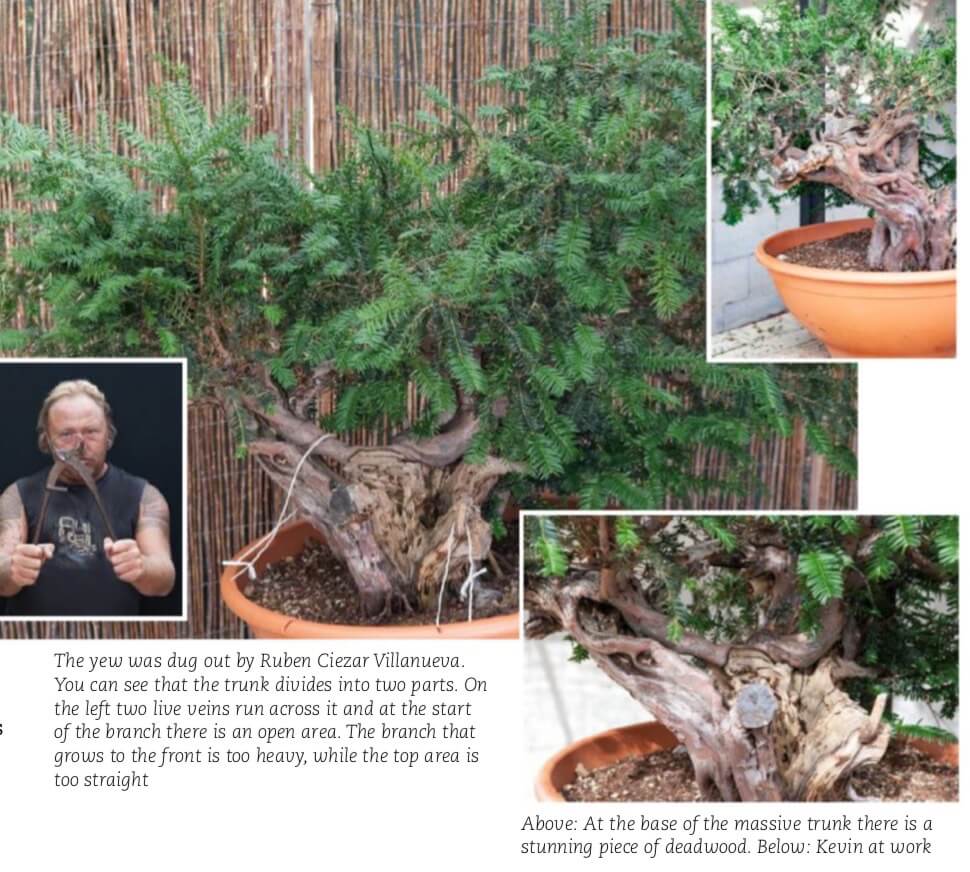
- The yew was dug out by Ruben Ciezar Villanueva. You can see that the trunk divides into two parts. On the left two live veins run across it and at the start of the branch there is an open area. The branch that grows to the front is too heavy, while the top area is too straight
- Above: At the base of the massive trunk there is a stunning piece of deadwood. Below: Kevin at work
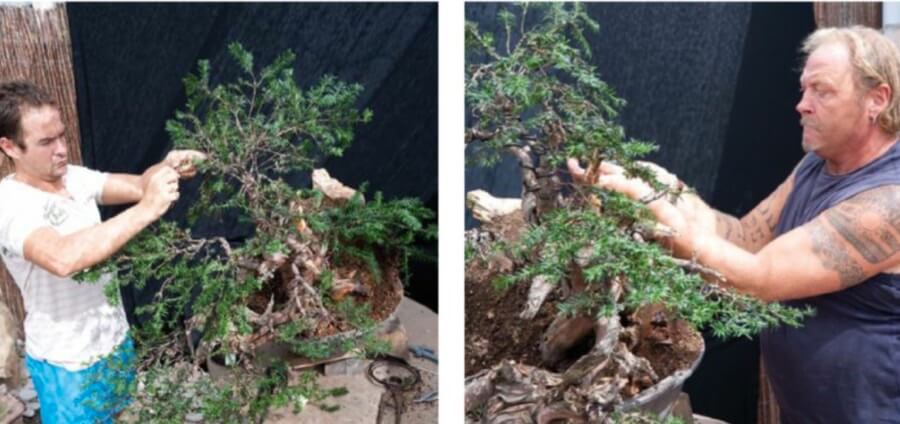
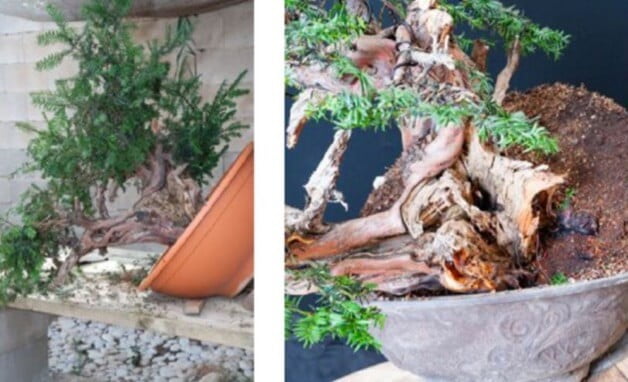
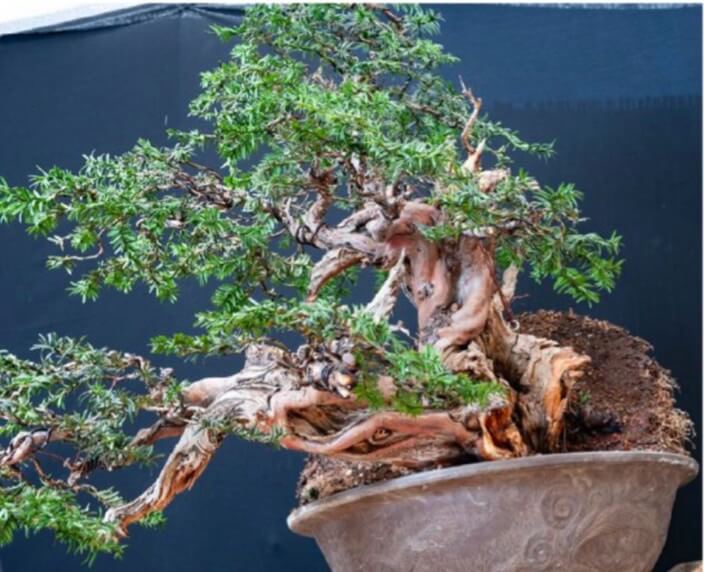
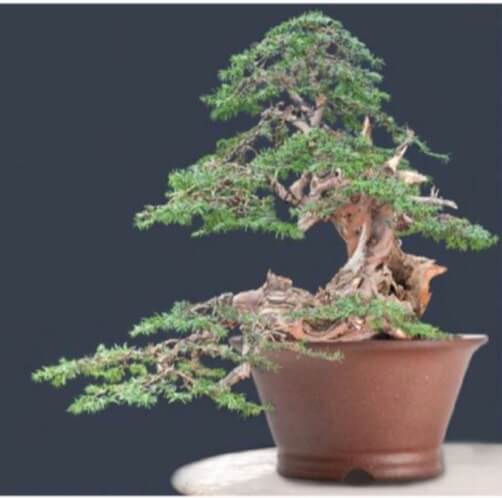
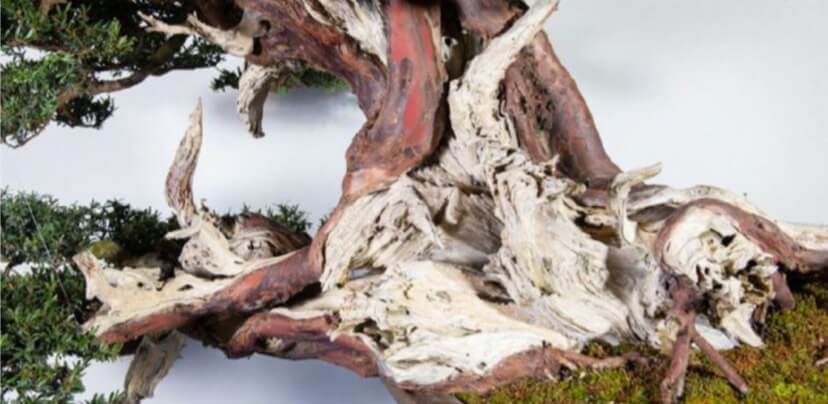
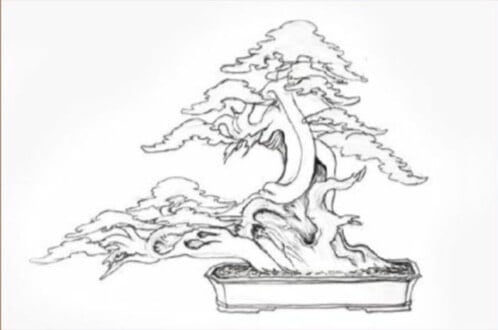
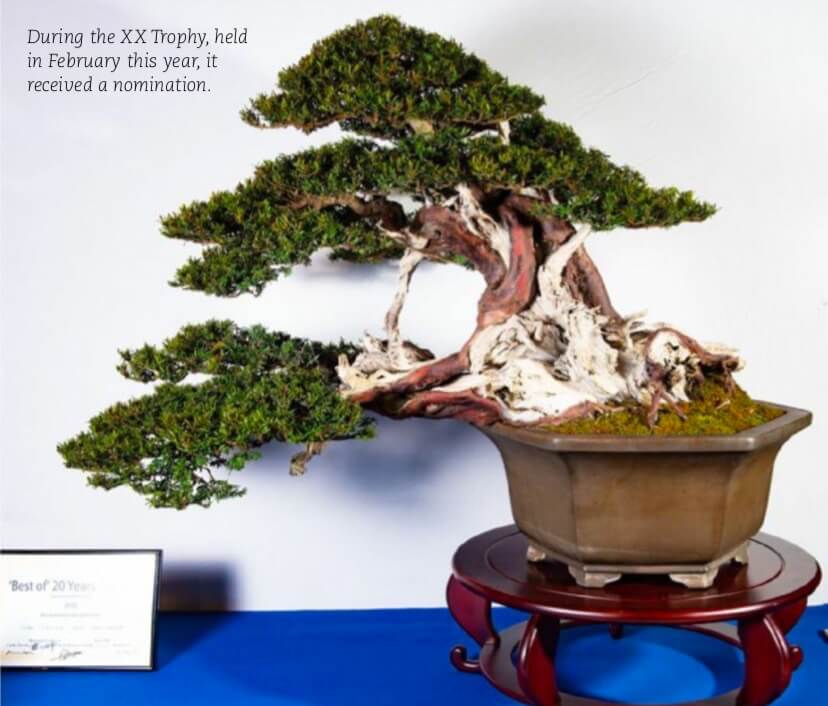
Tiếng Việt
Cập nhật: Amigos of the tejos – Nhìn lại về cây Bonsai được tạo ra cách đây 9 năm bởi Kevin Willson
- Bài và ảnh: Bonsai Focus Studio
Trong triển lãmXX Trophy, được tổ chức vào tháng Hai năm nay, chúng tôi tình cờ gặp một người bạn cũ, một cây Bonsai Thuỷ Tùng được tạo kiểu bởi Kevin Willson. Cái cây đã trải qua một quá trình biến đổi đáng kinh ngạc và là một trong những nhân vật thu hút sự chú ý của buổi biểu diễn. Chúng tôi không thể không hoài niệm lại con đường ký ức
Tất cả xảy ra vào tháng 9 năm 2010 ở Alicante, Tây Ban Nha, nơi Kevin Willson tận hưởng cuộc sống như một ngôi sao nhạc rock. Kevin đã có rất nhiều ý tưởng thiết kế trong đầu và đã minh họa hai trong số đó. Ruben Ciezar Villanueva, chủ sở hữu và nhà sưu tập, đã chọn tùy chọn sự cổ điển hơn là một cách ngẫu hứng. Điều này là do phong cách cổ điển sẽ thực sự nhấn mạnh đến các tĩnh mạch sống và gỗ chết chuyển động tuyệt vời.
Kevin giải thích rằng khi cây này được thu thập, các gân sống của nó không dày như bây giờ; cái cây cần thiết để thích nghi với hoàn cảnh khắc nghiệt trên núi, nơi tán lá phát triển kém mạnh mẽ hơn so với khi ở dưới núi.
Phần lớn thời gian dành cho việc chạm khắc gỗ chết. Mặc dù sử dụng các công cụ lớn để tách và xé gỗ, việc sử dụng máy là cần thiết vì gỗ của nó là sắt cứng. Rủi ro khi chạm khắc gỗ chết như vậy là bạn có thể làm hỏng nó chỉ trong chốc lát. Thiết kế được giữ đơn giản nhất có thể để cho phép chuyển động mạnh mẽ và các cành chết (Shari) thể hiện tiềm năng của nó. Mặt trước đã được điều chỉnh sau đó và thiết lập cành nhánh của nó thậm chí còn được đơn giản hóa hơn nữa. (Đọc toàn bộ chuyên mục Masterclass trong số báo Bonsai Focus 2011 Tháng 1 của chúng tôi.)

- Cây Thủy Tùng được đào bởi Ruben Ciezar Villanueva. Bạn có thể thấy rằng thân cây chia thành hai phần. Ở bên trái có hai đường gân sống chạy ngang và ở đầu cành có một khoảng trống. Cành mọc ra phía trước quá nặng, trong khi phần ngọn lại quá thẳng.
- Dưới gốc của thân cây to lớn có một mảnh gỗ chết tuyệt đẹp.







